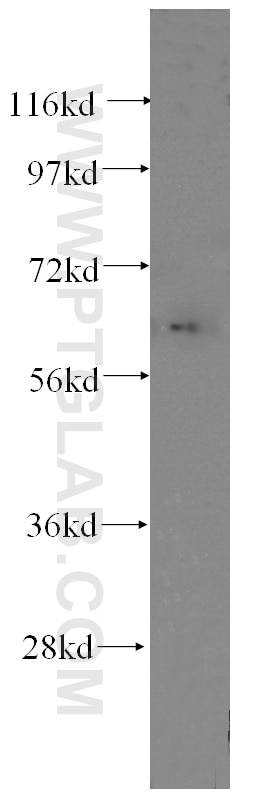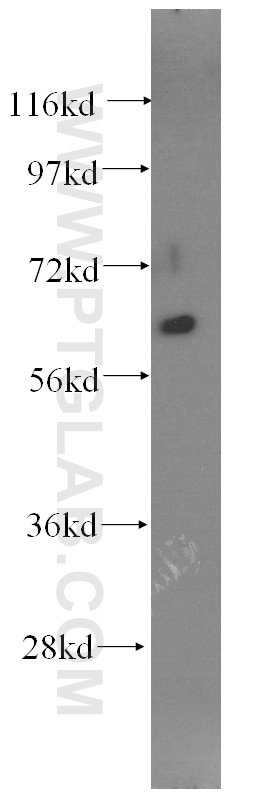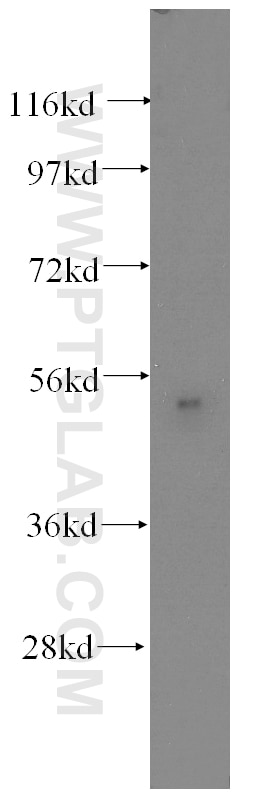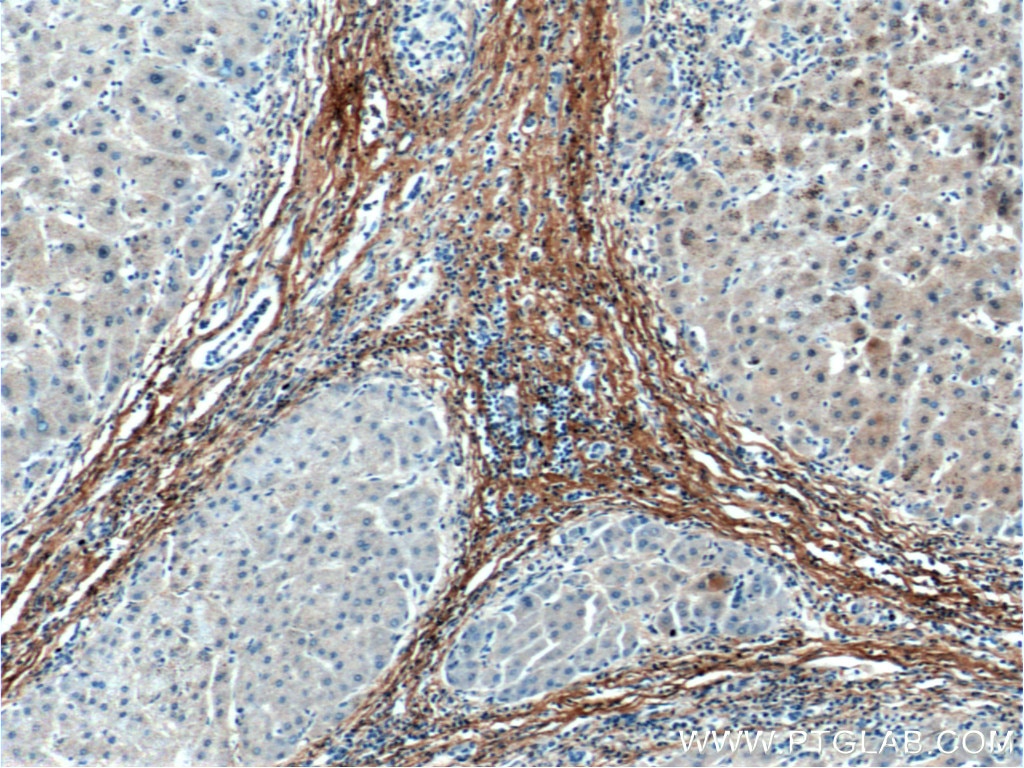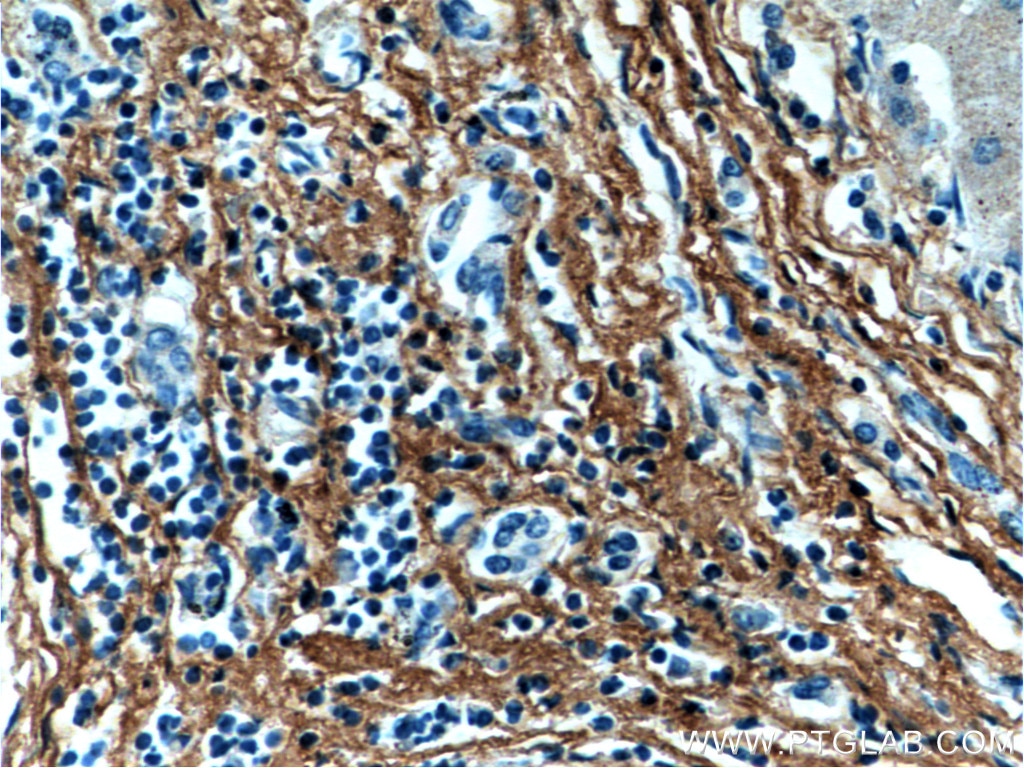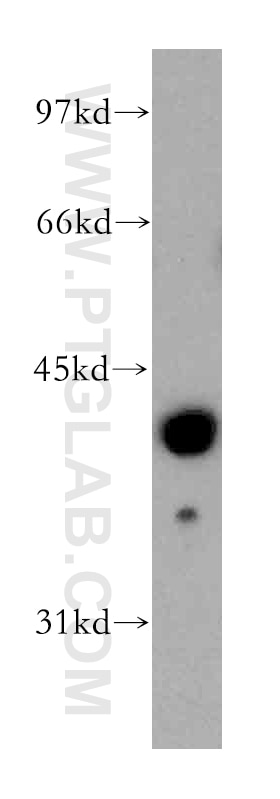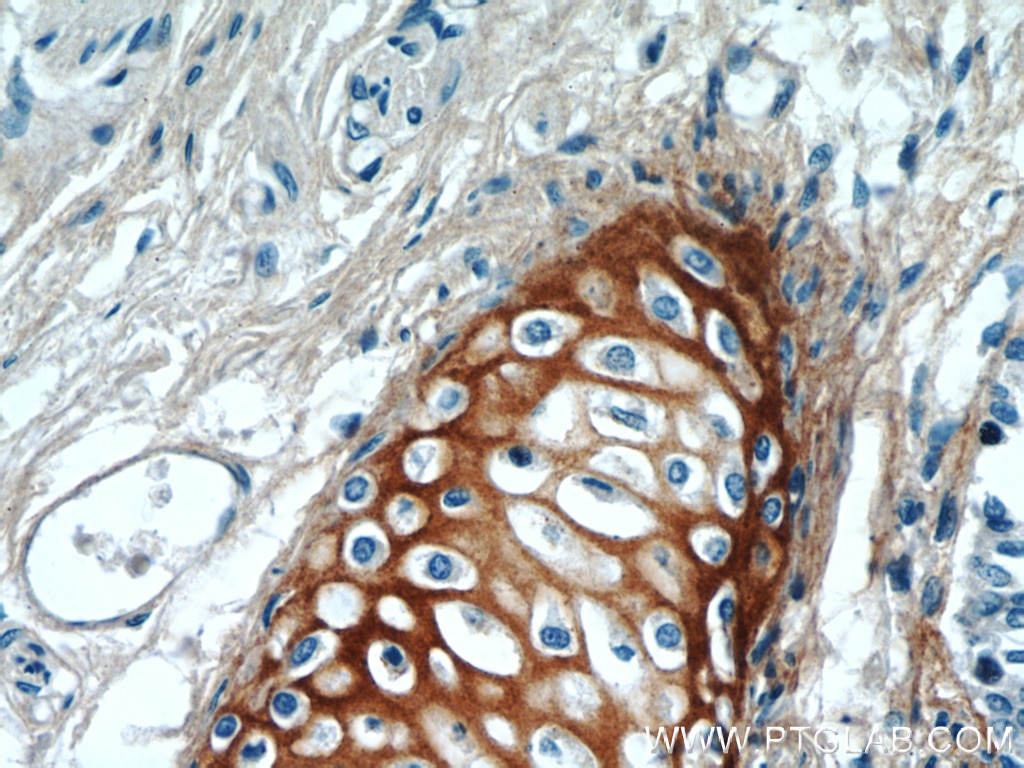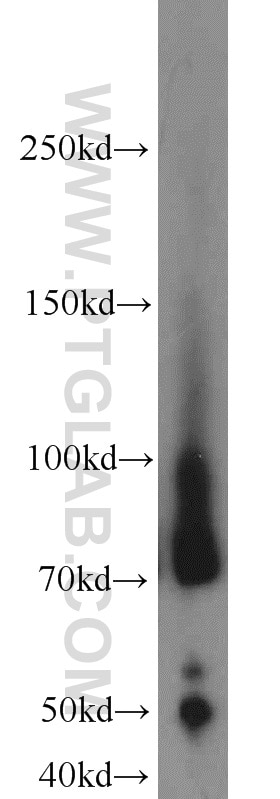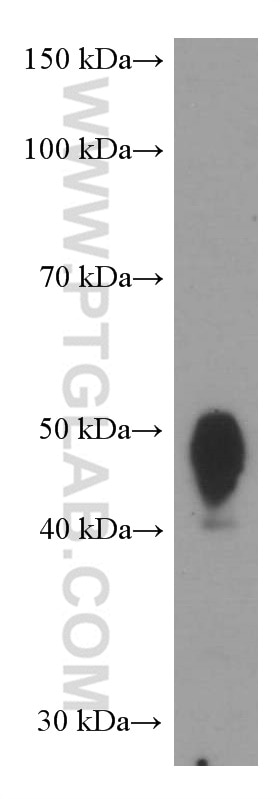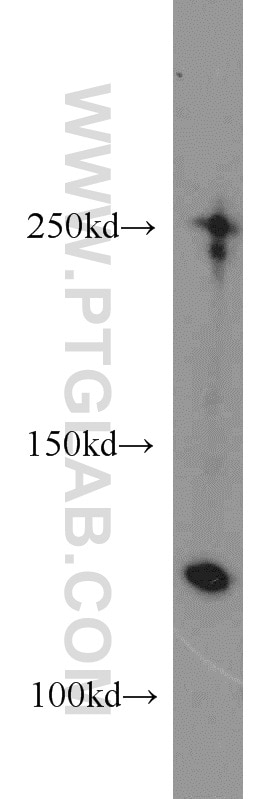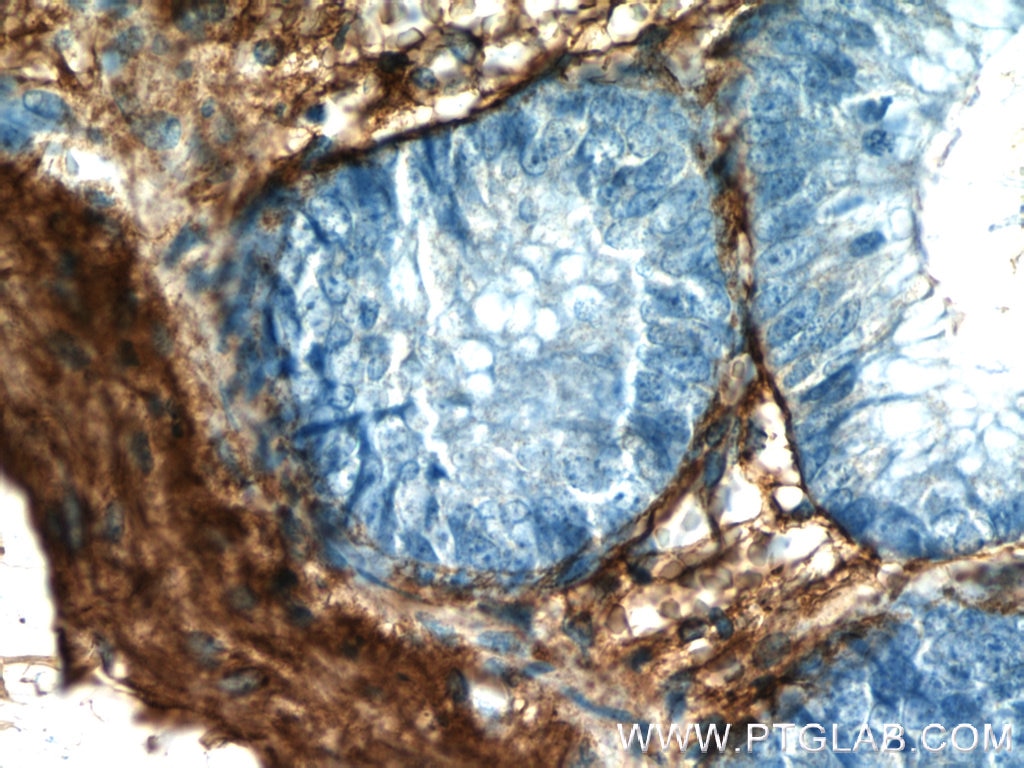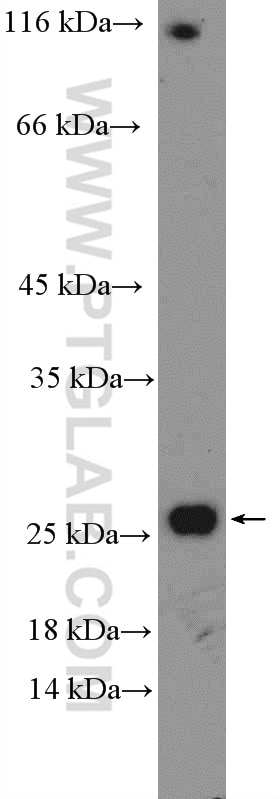- Phare
- Validé par KD/KO
Anticorps Monoclonal anti-Fibromodulin
Fibromodulin Monoclonal Antibody for IHC,ELISA
Hôte / Isotype
Mouse / IgG1
Réactivité testée
Humain et plus (2)
Applications
WB, IHC, IF, ELISA
Conjugaison
Non conjugué
CloneNo.
3E9D10
N° de cat : 60108-1-Ig
Synonymes
Galerie de données de validation
Applications testées
| Résultats positifs en IHC | tissu de cirrhose hépatique humain, il est suggéré de démasquer l'antigène avec un tampon de TE buffer pH 9.0; (*) À défaut, 'le démasquage de l'antigène peut être 'effectué avec un tampon citrate pH 6,0. |
Dilution recommandée
| Application | Dilution |
|---|---|
| Immunohistochimie (IHC) | IHC : 1:150-1:600 |
| It is recommended that this reagent should be titrated in each testing system to obtain optimal results. | |
| Sample-dependent, check data in validation data gallery | |
Applications publiées
| KD/KO | See 2 publications below |
| WB | See 3 publications below |
| IHC | See 3 publications below |
| IF | See 2 publications below |
Informations sur le produit
60108-1-Ig cible Fibromodulin dans les applications de WB, IHC, IF, ELISA et montre une réactivité avec des échantillons Humain
| Réactivité | Humain |
| Réactivité citée | rat, Humain, souris |
| Hôte / Isotype | Mouse / IgG1 |
| Clonalité | Monoclonal |
| Type | Anticorps |
| Immunogène | Fibromodulin Protéine recombinante Ag4030 |
| Nom complet | fibromodulin |
| Masse moléculaire calculée | 376 aa, 43 kDa |
| Numéro d’acquisition GenBank | BC035281 |
| Symbole du gène | FMOD |
| Identification du gène (NCBI) | 2331 |
| Conjugaison | Non conjugué |
| Forme | Liquide |
| Méthode de purification | Précipitation de l'acide caprylique/du sulfate d'ammonium |
| Tampon de stockage | PBS avec azoture de sodium à 0,1 % et glycérol à 50 % pH 7,3 |
| Conditions de stockage | Stocker à -20°C. Stable pendant un an après l'expédition. L'aliquotage n'est pas nécessaire pour le stockage à -20oC Les 20ul contiennent 0,1% de BSA. |
Informations générales
Fibromodulin (FMOD), an extracellular matrix protein, belongs to the small leucine-rich proteoglycan family. Fibromodulin is a collagen-binding protein present in many types of connective tissues, e.g. cartilage, tendon, skin, sclera and cornea (PMID: 2531085). It is involved in fibrillogenesis, cell adhesion, and cytokine activity modulation (PMID: 15741214). Fibromodulin may participate in the assembly of the extracellular matrix as it interacts with type I and type II collagen fibrils and inhibits fibrillogenesis in vitro. It may also regulate TGF-beta activities by sequestering TGF-beta into the extracellular matrix. The calculated molecular mass of fibromodulin is 43 kDa, extracellular fibromodulin appears as one single band of 59 kDa due to glycosylation (PMID: 2531085; 22138190).
Protocole
| Product Specific Protocols | |
|---|---|
| WB protocol for Fibromodulin antibody 60108-1-Ig | Download protocol |
| IHC protocol for Fibromodulin antibody 60108-1-Ig | Download protocol |
| Standard Protocols | |
|---|---|
| Click here to view our Standard Protocols |
Publications
| Species | Application | Title |
|---|---|---|
Adv Sci (Weinh) Spatiotemporal Characterization of Human Early Intervertebral Disc Formation at Single-Cell Resolution | ||
J Clin Invest Melanocyte-secreted fibromodulin promotes an angiogenic microenvironment.
| ||
Acta Biomater In situ regeneration of bone-to-tendon structures: Comparisons between costal-cartilage derived stem cells and BMSCs in the rat model. | ||
FASEB J Melanocyte pigmentation inversely correlates with MCP-1 production and angiogenesis-inducing potential. | ||
Cartilage Enhancement and Repair of Degenerative Intervertebral Disc in Rats Using Platelet-Rich Plasma/Ferulic Acid Hydrogel | ||
Exp Ther Med Function and mechanism of pyrin and IL-10 in the regulation of the inflammasome in pulmonary vascular endothelial cells following hemorrhagic shock. |
